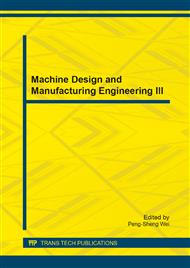p.417
p.422
p.427
p.431
p.435
p.440
p.449
p.454
p.458
The Design of Dynamic Model of Engineering Material Arresting System
Abstract:
Engineered Material Arresting System (EMAS) is a new type of soft ground arresting system that can safely arrest the overrun aircraft in an allowed distance without injuring aircraft passengers and damaging aircraft landing gear. The paper provides an overview of the EMAS background firstly. A numerical simulation is carried out by VB.NET software through reasonable hypothesis and simplification the system of dynamic model. The model is reasonable and feasible compared with prototype experiment results.
Info:
Periodical:
Pages:
435-439
Citation:
Online since:
July 2014
Authors:
Keywords:
Price:
Сopyright:
© 2014 Trans Tech Publications Ltd. All Rights Reserved
Share:
Citation:


